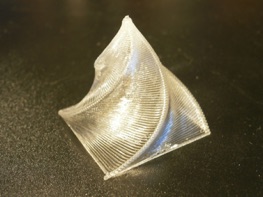Kanada, Y., Procedia Computer Science, Vol. 34, pp. 661-667, 2014.
Kanada, Y., Workshop on Software Defined Networks for a New Generation of Applications and Services (SDN-NGAS 2014), August 2014, http://dx.doi.org/10.1016/j.procs.2014.07.094
[ 日本語のページ ]
[ Paper PDF file (Science Direct) ]
[ Paper PDF file (in this site) ]
[ Slides PDF file ]
Abstract: Although nodes in a network-virtualization infrastructure, which
is called a virtualization node, usually contain a switch or a
router with sophisticated and high-performance functions such as
Ethernet switching, VLAN, and IP routing, most of such infrastructure
functions cannot be reused as program components by slices.
Accordingly, a method for providing such functions to
slices on a virtualization node (VNode) infrastructure, by applying
the previously proposed plug-in architecture, is proposed. This
architecture defines two types of plug-ins, i.e., control plug-ins
and data plug-ins, and interfaces for them. As for the proposed
method, the switch or router in the VNode is regarded as a data
plug-in, and a control plug-in that allocates and isolates the
switch/router resources was developed. The data plug-in interface
was customized to handle a data plug-in, i.e., a layer-3 switch
in a VNode, and a control plug-in and the interfaces for providing
layer-3/VLAN switch functions to slices were designed, implemented,
and evaluated. The evaluation result shows that instead of
specifying a routing/switching program or method,
specifying only an additional 8 to 25 lines in a slice definition enables
slice developers to use routing and switching functions.
Introduction to this research theme:
Network virtualization
Keywords: Network-node plug-in architecture; Network virtualization; Virtualization node; VNode; In-slice switching; In-slice routing; Deep programmability
 Abstract: When creating forms by using a 3D printer, usually, a static (declarative) model designed by using a 3D CAD system is translated and sent to the printer. However, widely-used FDM-type 3D printers inputs a dynamical (procedural) program that describes control of motions of the print head and extrusion of the filament. If the program is expressed by a programming language or a library in a straight manner, 3D objects can be created by a method similar to turtle graphics. Such a library, “turtle 3D printing” library, which is open-source, was described by Python and used (tried). Although this problem has a problem that it cannot print in the air; however, if this problem is solved by an appropriate method, shapes drawn by 3D turtle graphics can be embodied by this method.
Abstract: When creating forms by using a 3D printer, usually, a static (declarative) model designed by using a 3D CAD system is translated and sent to the printer. However, widely-used FDM-type 3D printers inputs a dynamical (procedural) program that describes control of motions of the print head and extrusion of the filament. If the program is expressed by a programming language or a library in a straight manner, 3D objects can be created by a method similar to turtle graphics. Such a library, “turtle 3D printing” library, which is open-source, was described by Python and used (tried). Although this problem has a problem that it cannot print in the air; however, if this problem is solved by an appropriate method, shapes drawn by 3D turtle graphics can be embodied by this method.